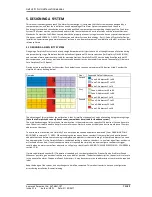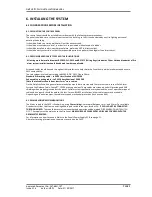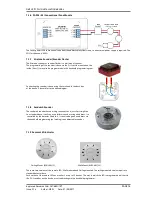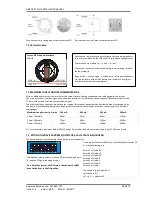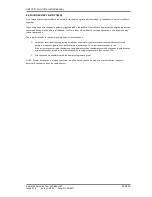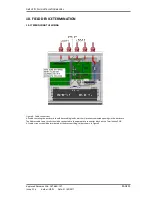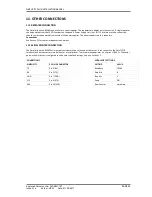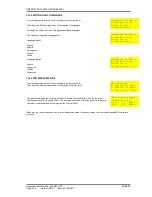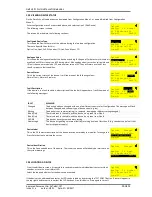
SIMPLICITY PLUS INSTALLATION MANUAL
Approved Document No: GLT.MAN-107
PAGE 19
Issue 3.16 Author: NRPJ Date: 21/09/2017
8. SOUNDERS
The Simplicity panel does not have any conventional sounder circuits on board. The idea of the simplicity is to connect
everything to one circuit, so it only uses addressable sounders.
There are several types of addressable sounder that can be used on the simplicity, all with advantages & disadvantages.
Choose the sounder type that is most suitable for the intended application.
8.1 ADDRESSABLE SOUNDERS
These are standard addressable sounders. Each sounder is given a unique address, so that it can communicate with the
control panel. Examples include the Zeta Addressable Maxitone & Zeta Addressable Xtratone sounders.
8.2 SANDWICH SOUNDER BASES - DETECTOR TRIGGERED
This is the default setting of the Sandwich Sounder. In this configuration, the sounder is controlled by the detectors
remote LED output. The panel can not "see" the sounder in this configuration. This type of sounder is sometimes called an
Associated sounder base or platform sounders. These do not communicate with the fire alarm panel. They are controlled
by the detectors remote output signal. This means that when a panel configures the loop, it cannot see these sounders.
The Simplicity assumes that any detector could have one of these sounders connected, so when an alarm signal comes,
the panel sends the “turn on your remote output” to EVERY detector. This makes their operation slower than standard
addressable sounders.
If not every detector has a sounder base fitted, it might be possible to speed up the sounder base start/stop time. See
CONFIGURING ASSOCIATED SOUNDERS section.
8.3 SANDWICH SOUNDER BASES - ADDRESSD MODE
The sandwich sounder can be given an address with the hand held programming tool. The sunder needs to be given a
separate address to the detector. The advantage is that the sounder is seen by the panel, so can be monitored by the
panel.
8.4 ADDRESSABLE SOUNDER CIRCUIT CONTROLLER
If conventional sounders or bells need to be fitted, then a sounder circuit controller can be used (Zeta Addressable
Sounder Circuit Controller Unit). It will need to be separately powered. In operation, it will behave the same as an
addressable sounder
8.5 COMPARISON OF SOUNDER TYPES
The Simplicity supports 4 general sounder types. All types have advantages & disadvantages.
SOUNDER TYPE
ADVANTAGE
DISADVANTAGE
Addressable Wall Sounder
Device is seen by panel (so is monitored
by protocol comms)
Tends to be more expensive
Uses device address.
Can’t be used for alarm verification
Extra wiring point
Sandwich Sounder - Detector Triggered
Doesn’t occupy Device Address
Can be used for the alarm verification
mode.
Detector & sounder at one wiring point
Slow stop time on heavy loaded loop
Sandwich Sounder - Addressed Mode
All sounders start instantly, and in sync.
Detector & sounder at one wiring point
Can’t be used for alarm verification
Addressable Sounder Circuit Controller
Wide range of devices
Devices tend to be cheaper.
Can add many sounder circuits to system
Needs Extra Cabling.
Needs External PSU
Uses device address.
Can’t be used for alarm verification
If you need to use alarm verification, the Sandwich Sounder - Detector Triggered base is needed.
If you need bells or XENON flashers, you will need a sounder circuit controller.




